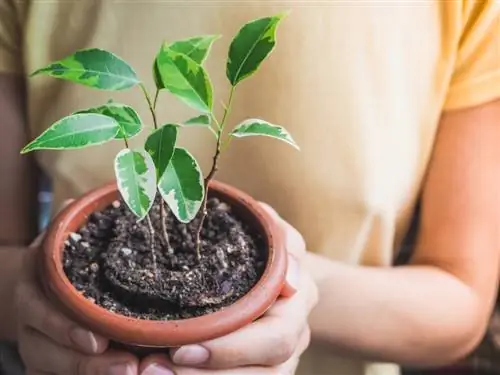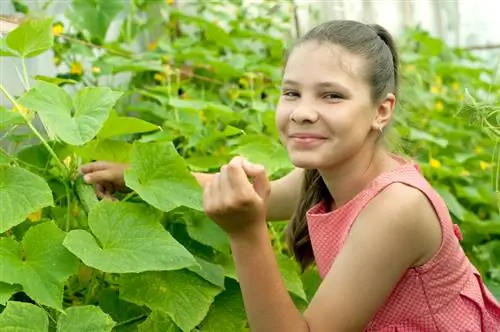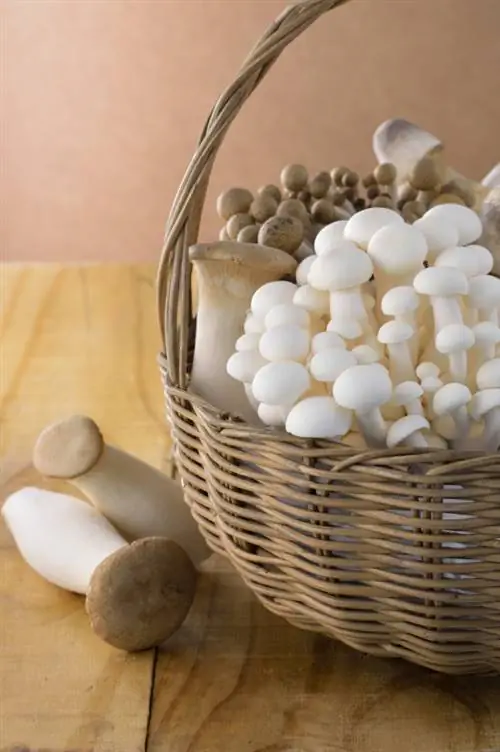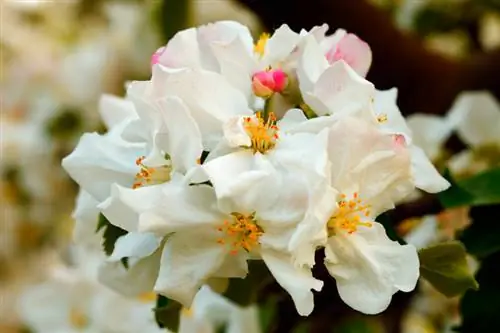- Author admin [email protected].
- Public 2023-12-16 16:46.
- Last modified 2025-01-23 11:21.
Growing your own trees is a lot of fun. After all, you are accompanying your house tree from seed to large specimen, the sight of which will certainly fill you with pride. There are different methods to grow a tree.
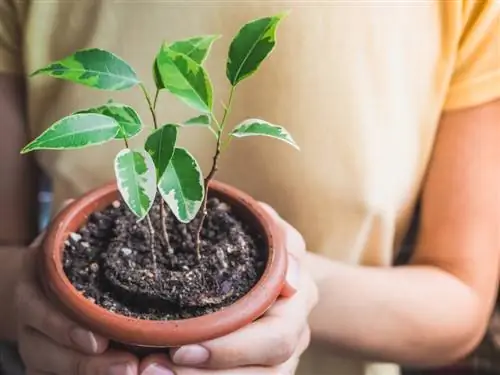
How can you grow trees yourself?
To grow trees yourself, you can sow seeds, propagate cuttings, use lowering, moss or grafting. Choose the appropriate method depending on the tree species and desired result.
Growing by seeds
Although propagation by seeds is very time-consuming, it is worth it: numerous seedlings are created, from which you can choose the most beautiful ones. New varieties can also be bred in this way, because seed propagation is not specific to each variety and is full of surprises. In order for the seeds to germinate successfully, they should be fresh - tree seeds do not last indefinitely. Therefore, collect the seeds yourself and do not keep them for too long. However, many tree seeds need a cold period with periods of frost to break dormancy. You can also create this artificially in a refrigerator. Nevertheless, sowing in autumn or winter is preferable so that the seeds are exposed to winter weather. Protection against hungry birds and rodents makes sense. Exotic trees do not require stratification.
Propagation of cuttings
Growing trees from cuttings is a very simple and effective method. It has the advantage that the starting material is produced during pruning anyway and can therefore be reused. There are woody and semi-woody cuttings. Woody cuttings are cut in winter; they are obtained from completely woody, sometimes even perennial shoots. Semi-lignified cuttings, on the other hand, are obtained from this year's soft shoots. Semi-lignified cuttings are best cut in late spring or early summer. Plant the cuttings immediately in a nutrient-poor soil-sand mixture and ensure high humidity.
Mossing, sinking and grafting
Lowering works in a similar way to propagating cuttings. However, the sinker remains on the mother plant until it has formed its own roots. To do this, bend a shoot down to the surface of the earth and cover the part lying on the earth with garden soil. Removal of moss, which is particularly often used in bonsai, works just as well. Select a well-shaped branch and use a very sharp knife to peel off a ring-shaped piece of bark. To do this, cut once around the top and bottom of the stem. Now surround the debarked stem area with sphagnum moss so that the roots can grow from the stem into the moss. Fruiting trees (such as fruit or ornamental fruit trees), on the other hand, must be refined, for example by grafting.
Tip
High humidity improves root growth. You can achieve this by placing a cut-off PET bottle over the seed or cutting or stretching cling film over it. Don’t forget to ventilate regularly!

